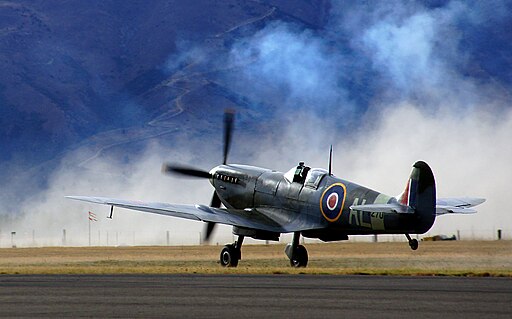In World War II history, certain names reverberate with the echoes of bravery, strategy, and sheer grit. Among them, the dynamic role of Squadron Leader Robert Stanford Tuck stands out, especially in the tumultuous skies over Britain in 1940. The Battle of Britain remains etched in history as a crucible of aerial combat, and Tuck’s experiences and significant contributions during this pivotal moment are worth delving into with diligence.
Robert Stanford Tuck, a name perhaps not as well-known as Churchill or Montgomery, remains inextricably woven into Britain’s fight for survival. Born in 1916, this young aviator found himself at the epicenter of a conflict that would shape the course of the 20th century. But what precisely made Tuck’s contribution to the Battle of Britain so significant?
As the leader of his squadron, Tuck’s flying skills were undeniable. With a staggering 29 confirmed enemy aircraft destroyed, his prowess was not just in numbers but also in the tactics he employed. The agility with which Tuck maneuvered his Hurricane or Spitfire became lessons for many a young pilot. But to attribute his successes solely to his flying abilities would be a glaring oversight.
During Tuck’s crazy escapades, there were times that felt like scenes from a blockbuster movie. One particular time stands out when he tried to outrun a Messerschmitt Bf 109. Rather than adopt traditional evasive maneuvers, Tuck chose to slam his Spitfire into a deliberate spin, confusing his pursuer and eventually turning the tables to position himself behind the enemy aircraft. Such actions showcased his mastery of aerial combat and his innate ability to think outside the proverbial box.
Beyond the cockpit, Tuck’s leadership style was a blend of camaraderie and discipline. His empathy and genuine concern for the well-being of his subordinates endeared him to many. Squadron members often spoke of how Tuck would join the ground crews, wrench in hand, working tirelessly into the night to repair damaged aircraft. This down-to-earth attitude fostered an environment of mutual respect, leading to a cohesive and highly effective fighting unit.
However, war, with its unpredictable temperament, had its own plans. In 1942, Tuck was on a mission over France, right? Out of nowhere, his plane gets shot down. He played hide and seek with the Germans for a little while, but luck wasn’t on his side forever. They captured him and landed him in a POW camp. But behind those enemy walls, Tuck’s spirit never wavered. Though unsuccessful, stories of his multiple escape attempts became legendary, epitomizing his never-say-die attitude.
Reflecting upon Tuck’s experiences during the Battle of Britain requires us to consider the confluence of multiple factors – his unparalleled flying skills, innovative combat tactics, inspirational leadership, and indomitable spirit. It is a testament to how individual prowess, when seamlessly integrated into the broader tapestry of collective effort, can influence the outcome of pivotal moments in history.
While the Battle of Britain was an intersection of numerous heroes, stories, and events, Robert Stanford Tuck’s narrative is a shining example. Out of all those World War II tales, Tuck’s wild ride of a story stands out. It’s got passion, grit, and a whole lot of dedication.
For more insights into the Supermarine Spitfire and other important military aircraft, visit Aces In Action. Here, you’ll find an amazing piece of artwork by Craig Tinder titled “Homeland Formation,” which illustrates the graceful lines of the Supermarine Spitfire as it depicts Wing Commander Robert S. Tuck in flying formation as he prepares his unit for the Battle of Britain. The limited edition canvas print includes a relic from a large aluminum panel from the port wing between ribs 14-17.
Homeland Formation – Supermarine Spitfire Aviation Art by Craig Tinder
Having returned across the English Channel during the Battle of France, Robert S. Tuck prepares for the inevitable assault on his homeland which would be known as the Battle of Britain. Tuck became a fighter ace by the Battle of Dunkirk and would be a confident leader during the Battle of Britain. In 1941, after targeting an alcohol distillery in France, he was shot down by a 20mm German flak gun. After multiple escape attempts, Tuck eventually escaped in 1945 by reaching the Russian lines. The war ended before he returned to Britain.






Share:
Father and Son Legacy: Exploring the Military Contributions of Claire and John Chennault in Aviation and the Air Force
Strategic Bombing Campaign Over Europe: Tactics, Goals, and Controversies